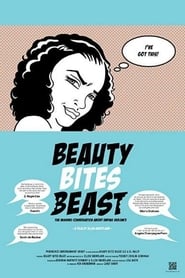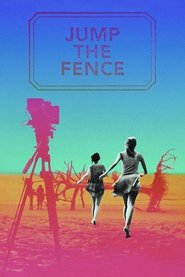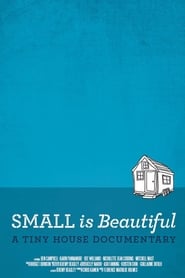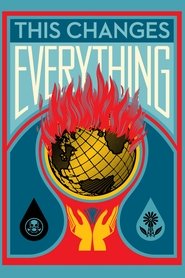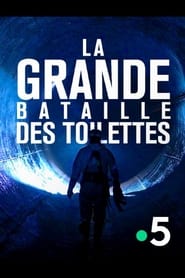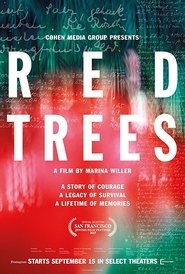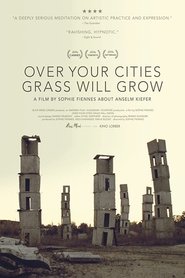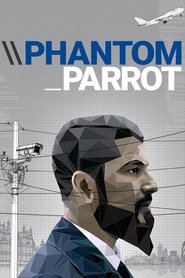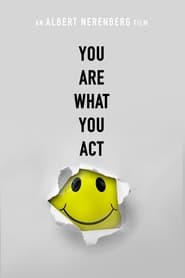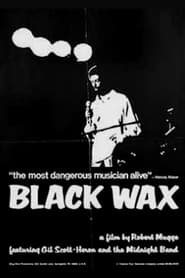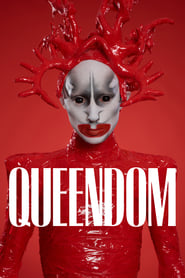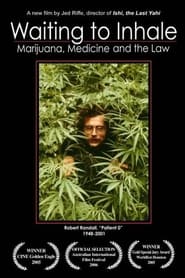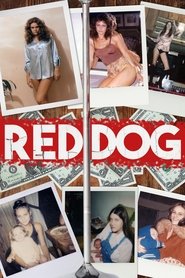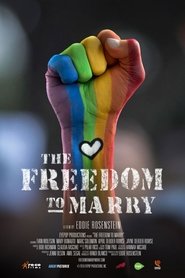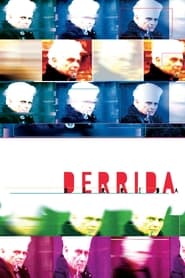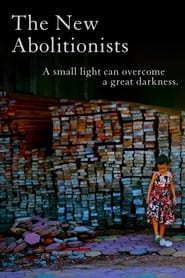Popular Documentary Movies on Free Services - Page 357
-
Beauty Bites Beast
2016
Beauty Bites Beast
2016
star 10Beauty Bites Beast aims to 'normalize' the idea of women's self-defense - and by extension, kids' self-defense - as a human need and right. -
Jump the Fence
2020
Jump the Fence
2020
Trek to Brazil for the making of the film "Raízes". Will artistic vision prevail as our crew battles the elements in this high pressure race against the clock? -
Small is Beautiful: A Tiny House Documentary
2015
star 4.8Four people seek a more sustainable and secure future by asking the question: "What is it really like to build and live in a tiny house?" -
Code of the Freaks
2020
Code of the Freaks
2020
star 8Taking its title from Tod Browning’s classic film, this radical reframing of how characters with disabilities are represented looks at a century of Hollywood favorites with a fresh perspective. Disability activists imagine a cinematic landscape that takes people with disabilities seriously. -
This Changes Everything
2015
star 6Based on Naomi Klein's book This Changes Everything: Capitalism vs. the Climate, a look at how people in various communities around the world play a role in the ongoing climate change debate and how they're affecting change in trying to prevent the environmental destruction of our planet. -
Barista
2015
Barista
2015
star 5.7Five top baristas find themselves pushing the limits of coffee perfection to win the National Barista Championship - a surreal competition where even one mistake is far too many. -
La grande bataille des toilettes
2022
star 5It's a subject we don't talk about. And yet, throughout the world, our toilets are undergoing a revolution unparalleled since the 19th century. Bill Gates is investing hundreds of millions of dollars to develop new types of toilet. India is installing millions of latrines so that no-one defecates in the open air any more. A public health issue, of course, but also a fable about our relationship with our most basic waste. -
Red Trees
2017
Red Trees
2017
star 7Award-winning filmmaker, Marina Willer (Cartas da Mãe), creates an impressionistic visual essay as she traces her father’s family journey as one of only twelve Jewish families to survive the Nazi occupation of Prague during World War II. Photographed by Academy Award® nominee César Charlone (City of God), the film travels from war-torn Eastern Europe to the color and light of South America and is told through the voice of Willer’s father Alfred (as narrated by Tim Pigott-Smith, Quantum of Solace), who witnessed bureaucratic nightmares, transportations and suicides but survived to build a post-war life as an architect in Brazil. As the world struggles with the current refugee crisis, RED TREES is a timely look at a family besieged by war who finds peace across an ocean. -
Over Your Cities Grass Will Grow
2011
star 6.6The film bears witness to German artist Anselm Kiefer's alchemical creative processes and renders in film, as a cinematic journey, the personal universe he has built at his hill-studio estate in the South of France. -
Nadia
2021
Nadia
2021
star 5Nadia Nadim, whose dad was killed by the Taliban in 2000, has embarked on this quest. The young Afghan woman, her 4 sisters, and their mother fled Kabul in the wake of the violence. Today, the Taliban have returned to rule. Football passion is what saved Nadia. She became a striker on the national team of her adoptive land, Denmark, then for the Paris-Saint-Germain women's team. Nadia, having achieved football stardom, wants to return to Afghanistan, to find out more about her father's fate. But the country is torn by terrorism as the Taliban and ISIS sow chaos daily. Giving up the trip, Nadia must grieve for another loss. However, she is unsinkable, and has plans for the future: graduate as a reconstructive surgeon and heal her people. -
Becoming Truly Human
2017
Becoming Truly Human
2017
Follow Basil as he navigates our modern cultural landscape, engaging with a group of spiritual "nones" (religious unaffiliated) in honest and open discussion on religion and spirituality, while recounting his own journey as a "none" in search of spiritual wholeness. -
Phantom Parrot
2024
Phantom Parrot
2024
The revelation of a top-secret British surveillance programme brings down the dominoes in a dark and analytical film about technology, rights and structural racism – and about a man with the courage to speak out. -
You Are What You Act
2018
You Are What You Act
2018
star 6Will smiling make you happy? Will changing your posture make you more confident? Can the science of embodied cognition make you feel better? -
Black Wax
1983
Black Wax
1983
Gil Scott-Heron, one of rap's earliest (and unfortunately unknown) pioneers, gets his full due in Black Wax, the 1982 documentary recently reissued on video. Interspliced between performance footage of Scott-Heron and his Midnight Band are vignettes of him walking around Washington D.C., spouting his views on then-President Reagan (dubbed "Ray-Gun") and generally dropping knowledge. The live performance features many of Scott-Heron's best-known hits, including "Johannesburg," "Winter in America," and "Angel Dust," among others. Warm, intelligent, and insightful throughout, Scott-Heron is clearly enjoying himself and the opportunity to espouse his views. A must for any fan of Scott-Heron's, and definitely worth a look for fans of the funkier jazz music of the mid to late 1970's. -
Queendom
2023
Queendom
2023
star 8.6In defiance of Russia’s anti-LGBTQ laws, a queer, 21-year-old artist risks her life performing in surreal costumes throughout Moscow. Jenna Marvin’s radical public performances blend artistry and activism in this SXSW documentary. -
Waiting to Inhale
2005
Waiting to Inhale
2005
Waiting to Inhale examines the heated debate over marijuana and its use as medicine in the United States. Twelve states have passed legislation to protect patients who use medical marijuana. Yet opponents claim the medical argument is just a smokescreen for a different agenda-- to legalize marijuana for recreation and profit. What claims are being made, and what are the stakes? Waiting to Inhale takes viewers inside the lives of patients who have been forever changed by illness-and parents who lost their children to addiction. Is marijuana really a gateway drug? What evidence is there to support the claim that marijuana can alleviate some of the devastating symptoms of AIDS, cancer and multiple sclerosis? Waiting to Inhale sheds new light on this controversy and presents shocking new evidence that marijuana could hold a big stake in the future of medicine. -
Red Dog
2019
Red Dog
2019
star 6.3Country songwriter Luke Dick spent his toddler years living in the Red Dog, the rowdiest and most popular strip club in Oklahoma City. Now 30 years later, Luke has a toddler and a newborn of his own. As he began asking his mom questions about his own childhood, she turned out to be more hilariously forthcoming than he ever imagined. -
The Freedom to Marry
2016
The Freedom to Marry
2016
star 5.1A documentary about the same-sex marriage movement, from the final frenetic months of the legal and grassroots campaign. -
Derrida
2002
Derrida
2002
star 6.5Documentary about French philosopher (and author of deconstructionism) Jacques Derrida, who sparked fierce debate throughout American academia. -
The New Abolitionists
2020
Filmmaker Christina Zorich follows abolitionists throughout Southeast Asia that have dedicated their lives to rescuing, rehabilitating, preventing and prosecuting those involved in human sex trafficking.
 Netflix
Netflix
 Amazon Prime Video
Amazon Prime Video
 Apple iTunes
Apple iTunes
 Apple TV Plus
Apple TV Plus
 Disney Plus
Disney Plus
 Google Play Movies
Google Play Movies
 Paramount Plus
Paramount Plus
 Hulu
Hulu
 HBO Max
HBO Max
 YouTube
YouTube
 fuboTV
fuboTV
 Peacock
Peacock
 Peacock Premium
Peacock Premium
 Amazon Video
Amazon Video
 The Roku Channel
The Roku Channel
 AMC+
AMC+
 Kocowa
Kocowa
 Hoopla
Hoopla
 The CW
The CW
 Vudu
Vudu
 Starz
Starz
 Showtime
Showtime
 PBS
PBS
 Pantaflix
Pantaflix
 FXNow
FXNow
 Tubi TV
Tubi TV
 Kanopy
Kanopy
 Comedy Central
Comedy Central
 Crunchyroll
Crunchyroll
 Microsoft Store
Microsoft Store
 Redbox
Redbox
 Sun Nxt
Sun Nxt
 ABC
ABC
 DIRECTV
DIRECTV
 Crackle
Crackle
 Fandor
Fandor
 Plex
Plex
